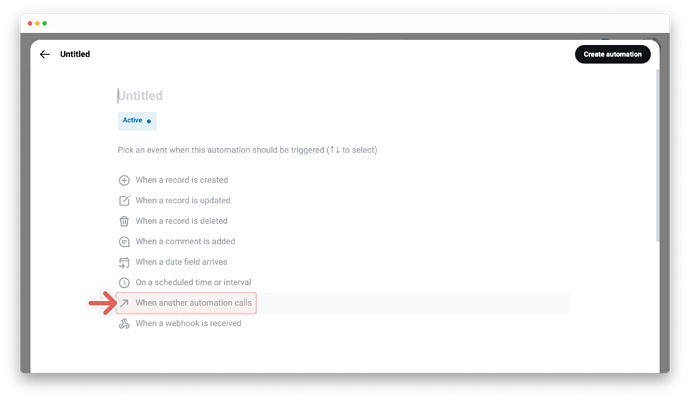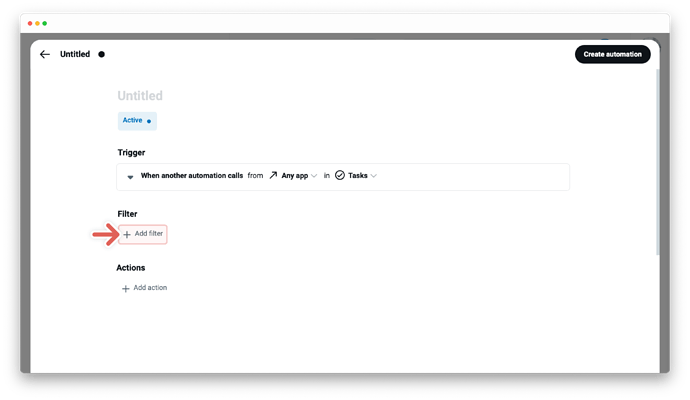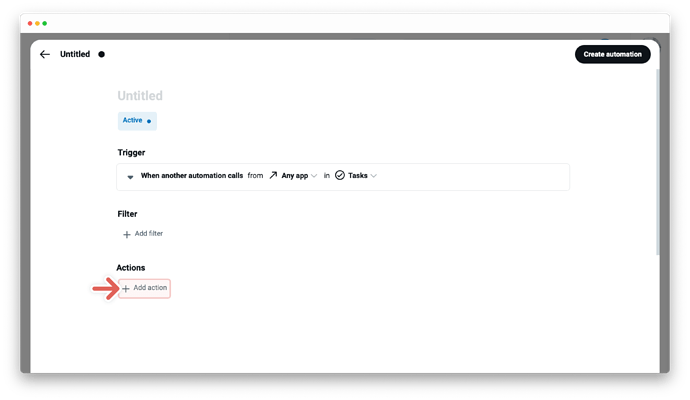Today we’re super excited to announce that the trigger…
![]() Automation calls
Automation calls ![]()
…is now part of our supercharged workflow automation ![]()
Tape is built to grow with your business. Building first automation is super simple with Tape. More advanced triggers like “Automation calls” help you manage even complex business processes and are designed for Tape experts. Want to get more out of Tape? Tape partners are certified consultants and are ready to help. Whether you’d like help deciding what to automate or need a hand building, you’ll find the right fit. Just get in touch with us and we connect you with one of our partners.
If you are a developer check out these resources →
Overview
The event that starts an automation with the trigger “When another automation calls” are the corresponding actions “Call automation” or “Call automation on collected” used in another automation. This allows you to create reusable automations and makes it easy to build much more manageable automations when you need to reuse or update the same actions across many automations. Besides the time saved by not adding the same actions to the different automations over and over again, you save time maintaining and updating the actions in just one automation.
For anyone with programming experience, the “Automation calls” are similar to a function in programming where you pass input parameters to the function from your main program and the function does some work with these parameters.
Create automation using the trigger “When another automation calls”
-
First automation block - Trigger - the “When this happens” automation statement
- Choose the trigger
When another automation calls - Set whether actions from specific apps or from any apps are allowed to send variables
- Set the trigger by selecting the app where the automation should be triggered
- Choose the trigger
-
Second automation block - Filter - the “And if conditions are met” automation statement
- Set your filter to start actions only if certain conditions are met:
- A field to be evaluated, at the first dropdown menu
- An operator at the second dropdown menu, i.e., Contains, Does not contain, Is not, etc.
- A field value - enter the field value for the selected field from the first dropdown. Note that the operators e.g. “is empty” and “is not empty” do not require you to input a field value
- Set your filter to start actions only if certain conditions are met:
-
Third automation block - Action - the “Then do that” automation statement
- Click on
+ Add actionand choose between various actions - Set up your action depending on your selected action such as in the simple use case above the action
Update record - Click
+ Add field- every field type has its own row. Add as many as you like - Set up the action condition to create the new record:
- A field to be evaluated, at the first dropdown menu
- An operator at the second dropdown menu depends on the selected field type i.e., Set value, Set options, Set date, etc.
- A field value - enter the field value for the selected field from the first dropdown
- Click on
-
Click on
Create automationat the top right
Edit and manage trigger
The automation editor allows you to edit or manage triggers and holds all the important details about your specific automation. To open the editor - click the card with the title of your automation in the gallery of the automation center. From this point, you can choose between various options. Learn more about →
New to workflow automation by Tape? Here’s a summary of what you need to know about automation.
To enable any type of automation, you’ll need to set up a trigger and one or more actions. Some automations also use filters.
- A trigger is an event that starts an automation. The “When this happens” statement. For example, “When a status changes” Learn more about → 1
- Filters are optional and start actions only if certain conditions are met. The “And if conditions are met” statement. For example, "only if the status changes to done" Learn more about →
- An action is an event the automation performs automatically after it is triggered. The “Then do that” statement. For example, “then send an email to a customer” Learn more about →


